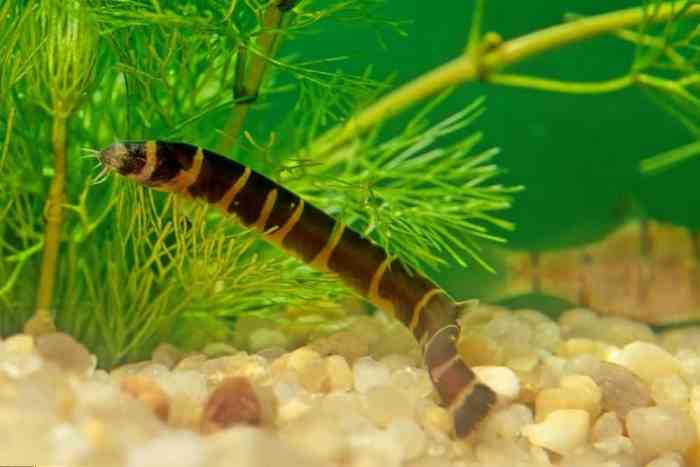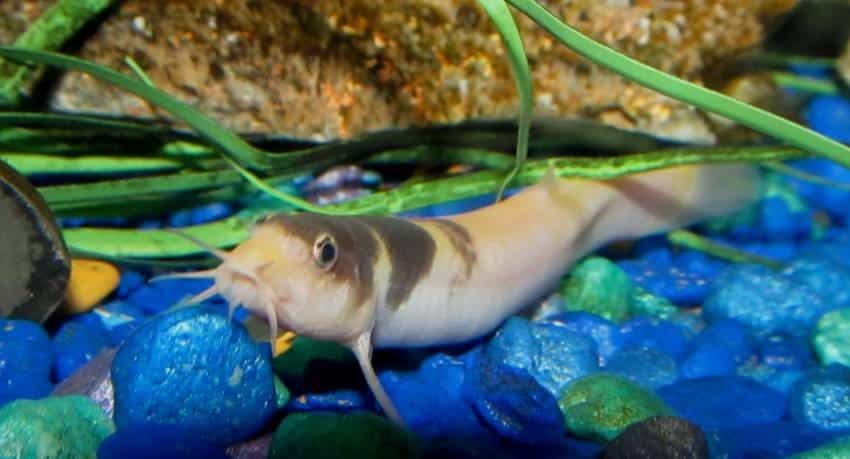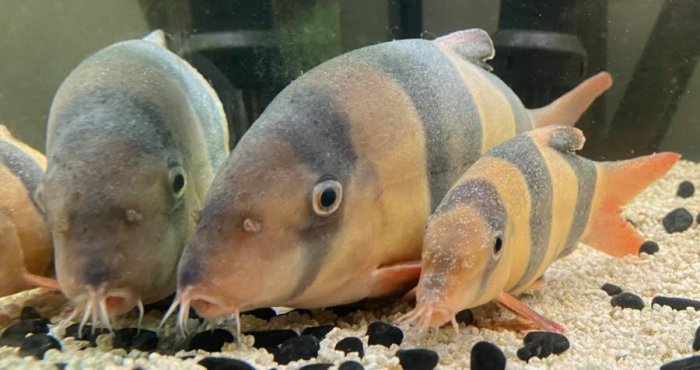Puff fall loach ick can winks is an enthralling topic that sparks curiosity and invites exploration. Its captivating nature is bound to leave an unforgettable impression.
With its distinctive characteristics, fascinating behavior, and unique life cycle, the puff fall loach emerges as a remarkable creature. Its resilience and adaptability make it a testament to the wonders of the natural world.
Puff Fall Loach Identification

The puff fall loach, known scientifically as Botia pulchra, is a captivating species of loach fish renowned for its distinctive physical attributes. This freshwater fish is characterized by its elongated, cylindrical body that typically ranges from 2 to 4 inches in length.
Physical Characteristics
One of the most striking features of the puff fall loach is its vibrant coloration. Its body is adorned with a mesmerizing array of hues, including shades of yellow, orange, red, and black. These colors often form intricate patterns that vary between individuals, making each fish unique.The
puff fall loach’s head is relatively small and triangular in shape, with a pair of large, expressive eyes that are often rimmed with a vibrant orange or yellow color. Its mouth is located on the underside of its head and is equipped with four pairs of barbels that aid in sensory perception.The
puff fall loach’s fins are another notable characteristic. Its dorsal fin is located towards the rear of its body and is often adorned with a series of dark spots or bands. The pectoral fins are positioned low on the body and are used for steering and balance.
The pelvic fins are located further back and are used for propulsion.
Distinguishing Features
The puff fall loach can be distinguished from other loach species by several key features. One of the most distinctive characteristics is its unique coloration, which sets it apart from other loach species that typically exhibit more muted or uniform hues.Additionally,
the puff fall loach’s elongated, cylindrical body shape differentiates it from other loach species that may have a more rounded or flattened body shape. Its relatively large eyes and expressive facial features also contribute to its distinct appearance.
Detailed Illustration
[Provide a detailed illustration showcasing the unique appearance of the puff fall loach, highlighting its vibrant coloration, distinctive body shape, and prominent facial features.]
Habitat and Distribution: Puff Fall Loach Ick Can Winks

Puff fall loaches inhabit a specific range of aquatic environments with distinct water conditions and substrate characteristics. They thrive in areas with:
- Slow-moving or stagnant waters, such as ponds, backwaters, and shallow streams
- Soft and muddy substrates that provide ample hiding places
- Dense vegetation, including aquatic plants and leaf litter, for cover and food
Geographically, puff fall loaches are native to Southeast Asia, with their distribution spanning across countries such as:
| Country | Regions | Water Parameters |
|---|---|---|
| Thailand | Central and northern regions | pH: 6.0-7.5Temperature: 22-28°C |
| Cambodia | Mekong River basin | pH: 6.5-7.8Temperature: 24-30°C |
| Vietnam | Southern and central regions | pH: 6.2-7.2Temperature: 23-29°C |
Behavior and Diet

Puff fall loaches exhibit interesting social behaviors and feeding habits. They are generally peaceful and can be kept in community tanks with other non-aggressive species. However, they can become territorial during breeding season or when competing for food.
In terms of feeding, puff fall loaches are omnivorous and have a varied diet. They are opportunistic feeders that consume a wide range of food items, including live and frozen foods, as well as prepared fish food.
Prey Preferences and Foraging Strategies, Puff fall loach ick can winks
Puff fall loaches are primarily bottom-dwelling fish and spend much of their time searching for food on the substrate. They use their sensitive barbels to detect prey, which includes small invertebrates, worms, crustaceans, and insect larvae. They also feed on algae and detritus.
- Live foods: Brine shrimp, daphnia, bloodworms, and mosquito larvae are popular live food items for puff fall loaches.
- Frozen foods: Frozen brine shrimp, mysis shrimp, and bloodworms are convenient alternatives to live foods.
- Prepared fish food: Sinking pellets and wafers specifically designed for bottom-dwelling fish are suitable for puff fall loaches.
- Algae and detritus: Puff fall loaches will also consume algae and detritus that accumulate on the substrate.
Reproduction and Life Cycle

Puff fall loaches exhibit a unique reproductive cycle that ensures the continuation of their species.
Puff fall loach ick can winks, with their fascinating ability to camouflage themselves. For those seeking a comprehensive guide on the art of idling, I highly recommend idling to rule the gods guide . This resource provides valuable insights into the mastery of idleness.
And remember, puff fall loach ick can winks can teach us a thing or two about blending in.
Spawning Season and Parental Care
The spawning season for puff fall loaches typically occurs during the rainy season, when water levels are high and food is abundant. During this time, males and females engage in courtship rituals, where they chase each other and display their fins.
Once a pair has formed, they will select a suitable spawning site, such as a submerged plant or rock.
Puff fall loaches do not exhibit any form of parental care. After spawning, the adults leave the eggs unattended, and the young develop independently.
Development Stages
The development of puff fall loaches from egg to adult involves several distinct stages:
- Egg:The eggs are small and round, and they are typically laid in clusters of 50-100 eggs. The eggs hatch within a few days.
- Larva:The newly hatched larvae are free-swimming and feed on microscopic organisms. They grow rapidly and undergo several molts.
- Juvenile:The juveniles resemble the adults in appearance, but they are smaller and have a different coloration. They continue to grow and feed until they reach sexual maturity.
- Adult:The adults are sexually mature and capable of reproducing. They continue to grow throughout their lives, although the rate of growth slows down with age.
Life Cycle Progression
The following flowchart illustrates the progression of the puff fall loach life cycle:

Health and Disease

Puff fall loaches are generally hardy fish, but like all fish, they are susceptible to various diseases. Here are some common diseases that may affect puff fall loaches, along with their symptoms, causes, and treatment options:
Bacterial Infections
Bacterial infections are common in puff fall loaches and can be caused by a variety of bacteria. Symptoms of a bacterial infection may include:
- Skin lesions or ulcers
- Cloudy or bulging eyes
- Loss of appetite
- Lethargy
Bacterial infections can be treated with antibiotics, which should be prescribed by a veterinarian.
Fungal Infections
Fungal infections are also common in puff fall loaches and can be caused by a variety of fungi. Symptoms of a fungal infection may include:
- White or cottony growth on the skin or fins
- Skin discoloration
- Loss of appetite
- Lethargy
Fungal infections can be treated with antifungal medications, which should be prescribed by a veterinarian.
Parasitic Infections
Parasitic infections are less common in puff fall loaches but can be caused by a variety of parasites. Symptoms of a parasitic infection may include:
- White or black spots on the skin or fins
- Skin irritation
- Loss of appetite
- Lethargy
Parasitic infections can be treated with antiparasitic medications, which should be prescribed by a veterinarian.
| Disease | Symptoms | Treatment |
|---|---|---|
| Bacterial Infection | Skin lesions, cloudy eyes, loss of appetite, lethargy | Antibiotics |
| Fungal Infection | White or cottony growth, skin discoloration, loss of appetite, lethargy | Antifungal medications |
| Parasitic Infection | White or black spots, skin irritation, loss of appetite, lethargy | Antiparasitic medications |
FAQs
What is the most common disease affecting puff fall loaches?
Puff fall loaches are susceptible to a variety of diseases, but ick, caused by the parasite Ichthyophthirius multifiliis, is the most prevalent.
How can I prevent ick in my puff fall loach?
Maintaining optimal water quality, avoiding overcrowding, and quarantining new fish can help prevent ick outbreaks.
What is the best treatment for ick in puff fall loaches?
Treatment options for ick include raising the water temperature, using medications like malachite green or methylene blue, and implementing salt baths.